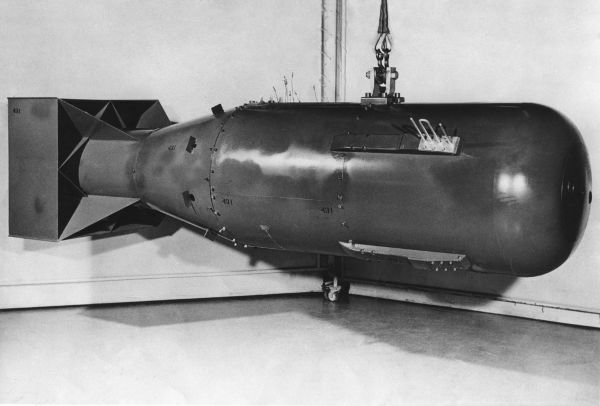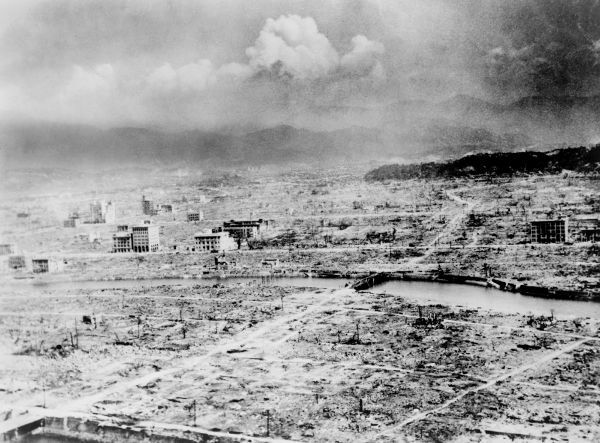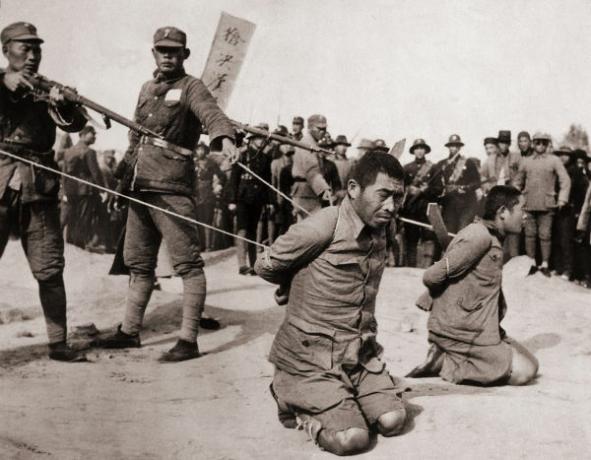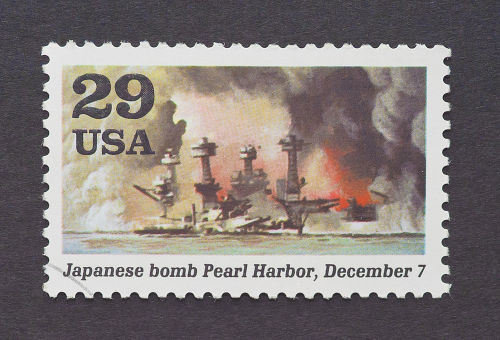On August 6, 1945, the United States made use of the most powerful weapon of war in human history to date: nuclear bombs. The bomb dropped on the Japanese city of Hiroshima it caused great destruction and was used in the final stage of the conflict with the aim of forcing a Japanese surrender. The dropping of the nuclear bomb on Hiroshima is now considered a war crime committed by the United States.
Context
The use of the nuclear bomb in Hiroshima is within the context of the confrontation between Japan and the United States during the Second World War. Conflicts between the two nations started after the Japanese attack on the American naval base in pearl harbor in Hawaii on December 7, 1941.
Japan was motivated to attack the United States by the victories that the German army had won in Europe until then. Japan's intention in attacking the United States was to defeat the nation in order to definitively expel it from Asia, which would allow Japan to exert control over the continent. However, the Japanese decision was a big one.
error, for it underestimated the economic capacity and mobilization for the war of the United States.The fights between the two nations soon began to show the American superiority, as important victories were happening throughout the conflict, as in the battles of midway, Guadalcanal, Tarawa etc. This is not to say, of course, that the American victory was won easily, as the accounts portray the Japanese stubbornness to fight the Americans to the death.
By August 1945, the conflict had already ended in Europe and dragged on into Asia, as Japan did not accept surrender. Despite the refusal to surrender, Japan was destroyed by the war.
imminent defeat

Replica of the "little boy”, the uranium bomb dropped on the city of Hiroshima
In 1945, Japan was a country in collapse, for it had already lost almost all the territories occupied during the war and the Japanese economy could no longer support financing the conflict. Internally, the suffering of the population with the destruction was magnified by the lack of food. In addition, the nation suffered from the bombing of American planes.
In mid-1945, the United States was already drawing up plans for a possible territorial invasion of Japan, however, the Japanese refusal to the terms of surrender proposed in the Potsdam Declaration made the United States opt for the use of nuclear bombs produced during the Manhattan Project.
The Manhattan Project was the nuclear program in which the United States brought together a number of scientists to produce nuclear weapons during World War II. Initially the bombs were designed to be used in Germany, but the defeat of Nazism caused the bombs to be used against Japan.
Bomb over Hiroshima

Aerial view of the city of Hiroshima days after the atomic bomb was dropped on the city
Do not stop now... There's more after the advertising ;)
The Hiroshima bomb was dropped on August 6, 1945, at 8:15 am. the bomb, namedlittle boy(little boy), was launched by the plane enola gay. The fission of the uranium bomb caused destruction that resulted in the death of about 80,000 people instantly.
The bomb's destructive power was so great that unprotected people near the launch site were instantly vaporized and others that were close to a wall had their press shadow on this wall, according to the account of Charles Pellegrino:
In the southern part of town, nearly four blocks past Lady Aoyama and the monks, Toshihiko Matsuda was about to leave his shadow on his mother's garden wall. He looked as if he had bent down to pick a piece of fruit or pull a weed. In the next few milliseconds, the wall behind Toshihiko would be imprinted by the glare not only with his shadow, but also with the ghost images of the plants that surrounded him […]. In the impression made on the wall, when the bomb exploded, one could see the shadow of a leaf that had just fallen from the vine and which, although it was falling, would never reach the ground.|1|.
The heat generated by the bomb caused fires and forced many people to take shelter in the river that runs through the city. A short time later, a heavy rain fell. The reports say that the rain was black. Charles Pellegrino explains the reason for the heavy rain after the bomb was dropped:
The pump had vaporized the water from the river and lakes all along Hiroshima. Within a radius of two kilometers, the leaves have lost a substantial portion of their moisture, as have birds and crickets, and every blade of grass, every soldier and child that has been outdoors. All accumulated vapors from the city were lifted into the lower layers of the stratosphere; when they cooled, condensed and started to fall|2|.
The reports tell the horror installed in the city with survivors deformed in every possible way. People had injuries and burns very serious spread throughout the body. In addition, the survivors absorbed amounts of radiation which proved to be deadly. People who managed to escape the nuclear explosion unharmed died suddenly days later. Others had to live with illnesses caused by radiation for the rest of their lives.
Despite the destruction wrought in Hiroshima, the Japanese government refused to sign the surrender and chose to continue the war. As a result, the United States used its second nuclear bomb days later, which was dropped in the city of Nagasaki.
|1| PELLEGRINO, Charles R. The last train from Hiroshima: the survivors look back. São Paulo: Leya, 2010, p.4.
|2|Idem, p.33.
By Daniel Neves
Graduated in History


